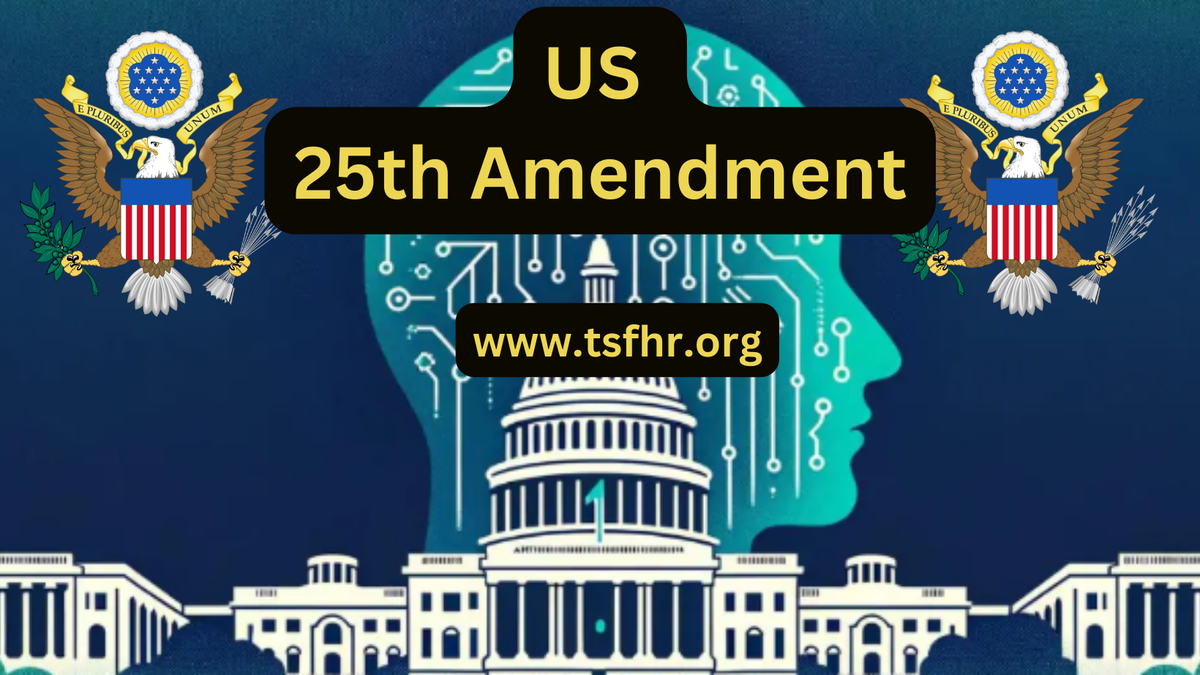What is the 25th Amendment in Simple Terms: Explore the 25th Amendment in simple terms. This article explains how it outlines the process for presidential succession and dealing with a president’s incapacity.
Introduction:
The 25th Amendment, ratified in 1967, addresses the issue of presidential succession and the procedures for filling vacancies in the office of the president or vice president. In simple terms, it ensures that the U.S. government continues to function smoothly in case the president is unable to perform their duties due to illness, death, or other reasons. This article will explain the 25th Amendment in simple terms, its creation, importance, and provide examples to help clarify its significance.
What is the 25th Amendment in Simple Terms:
What is the 25th Amendment in Simple Terms?
The 25th Amendment outlines the procedures for presidential succession in the event that the president is unable to fulfill their duties. It addresses situations where a president is incapacitated or leaves office, whether due to death, resignation, or other reasons. The amendment also clarifies how a new vice president can be appointed if that office becomes vacant.
When Was the 25th Amendment Created?
The 25th Amendment was ratified on February 10, 1967. It was created to clarify and formalize the procedures for presidential succession, which were somewhat ambiguous before its passage. The amendment was particularly important after the assassination of President John F. Kennedy in 1963, which exposed gaps in the existing process.
Why Was the 25th Amendment Created?
The 25th Amendment was created to provide a clear, legal framework for dealing with situations where the president cannot carry out their duties. This became especially necessary after the assassination of President Kennedy, which left the country without clear guidelines on what to do in such cases. The amendment ensures that there is always a line of succession and a process for dealing with presidential incapacitation.
Why is the 25th Amendment Important?
The 25th Amendment is crucial because it ensures continuity of government. It makes sure that the U.S. does not face a leadership vacuum in times of crisis or when the president is incapacitated. It also ensures that the vice president is immediately ready to assume the presidency, maintaining stability during uncertain times.
25th Amendment Rights
The 25th Amendment guarantees a clear process for presidential succession and the temporary transfer of presidential powers. It grants the vice president the authority to assume the presidency if the current president is incapacitated and temporarily unable to perform their duties. Additionally, it allows the president to temporarily transfer power to the vice president when necessary, such as when undergoing surgery or medical procedures.
25th Amendment Examples
- President Gerald Ford’s Appointment: In 1973, after Vice President Spiro T. Agnew resigned, President Richard Nixon nominated Gerald Ford as vice president. This nomination was the first to be made under the 25th Amendment’s provisions for filling vice presidential vacancies.
- President Ronald Reagan’s Surgery: In 1985, during surgery, President Ronald Reagan invoked the 25th Amendment and temporarily transferred his powers to Vice President George H.W. Bush. This ensured that the government continued to function smoothly during Reagan’s brief incapacitation.
Examples of the 25th Amendment Being Violated
- Failure to Notify Congress: In some cases, the amendment’s procedures were not fully followed. For example, when President George W. Bush underwent surgery in 2002 and 2007, there were instances where the transfer of power to the vice president was not formally documented with Congress, which is a key requirement of the 25th Amendment.
- Lack of Clear Succession: In rare cases, a president’s health status or incapacitation may cause uncertainty about whether they are capable of carrying out their duties. These situations have occasionally led to debates about the proper use of the 25th Amendment.
FAQs Section:
Q1: What is the 25th Amendment in Simple Terms for Kids?
The 25th Amendment makes sure there is always someone ready to be president, even if something happens to the current president. It explains what happens if the president is sick or can’t work anymore, and how the vice president can take over.
Q2: What Does the 25th Amendment Say in Simple Words?
The 25th Amendment says that if the president can’t do their job, the vice president will take over. It also explains what happens if the president gets sick or leaves office and how a new vice president can be chosen.
Q3: What is the 25th Amendment of the Bill of Rights in Simple Terms?
The 25th Amendment is not part of the Bill of Rights, but it is an important constitutional amendment. It helps ensure that if the president can’t work, the country has a clear plan for who will take over and how they will do it.
Q4: What is the 25th Amendment of the Bill of Rights in Simple Terms?
The 25th Amendment is not in the Bill of Rights, but it is an essential part of the U.S. Constitution. It ensures that there is always a leader in charge, even if the president can’t perform their duties.
Q5: What Does the 25th Amendment Mean in Kid Terms?
The 25th Amendment means that if the president gets sick or can’t do their job for some reason, the vice president becomes the president. It makes sure someone is always in charge, no matter what happens.
Conclusion:
The 25th Amendment is a vital part of the U.S. Constitution that ensures the continuity of government in times of presidential incapacity. It clearly outlines how the vice president can step in if the president is unable to perform their duties and how to fill vacant vice-presidential positions. This amendment plays an essential role in maintaining stability and preventing confusion in times of crisis.
